Abstract
OBJECTIVE: To investigate pregnant women's self-selection effects on the estimation of birthweight production function. A particular emphasis is placed on assessing the effectiveness of prenatal care as a major medical input in the birthweight production function. DATA SOURCES: Primary data compiled from birth and abortion certificates for the Commonwealth of Virginia in 1984. Several area-specific socioeconomic variables were also employed from the Area Resource File 1984; Supplemental Food Program for Women, Infants, and Children (WIC) Local Agency Directory; and the family planning clinics data by the Alan Guttmacher Institute (AGI). STUDY DESIGN: Two types of self-selection effects are defined: selection effect due to sample censoring from the resolution of pregnancies as live births or induced abortions; and selection effect due to the use of prenatal care as an endogenous variable. Race- and location-specific birthweight production functions are estimated using models with and without correction for self-selection effects. PRINCIPAL FINDINGS: The self-selection effect in the resolution of pregnancies is race-specific, being significant for African American women. The effectiveness of prenatal care in birthweight production is underestimated substantially by the selection bias from the use of prenatal care, and overestimated by the selection bias from pregnancy resolutions. On average, the overall estimated effectiveness of prenatal care is over five times higher after controlling for the selection effects. CONCLUSIONS: Self-selection effects could be a very serious problem in measuring the effectiveness of birthweight determinants in general. The overall effectiveness of prenatal care, in particular, tends to be significantly biased downward without controlling for selection effects. The significance and scale of the bias depends crucially on specific data and cohorts of the population investigated.
Full text
PDF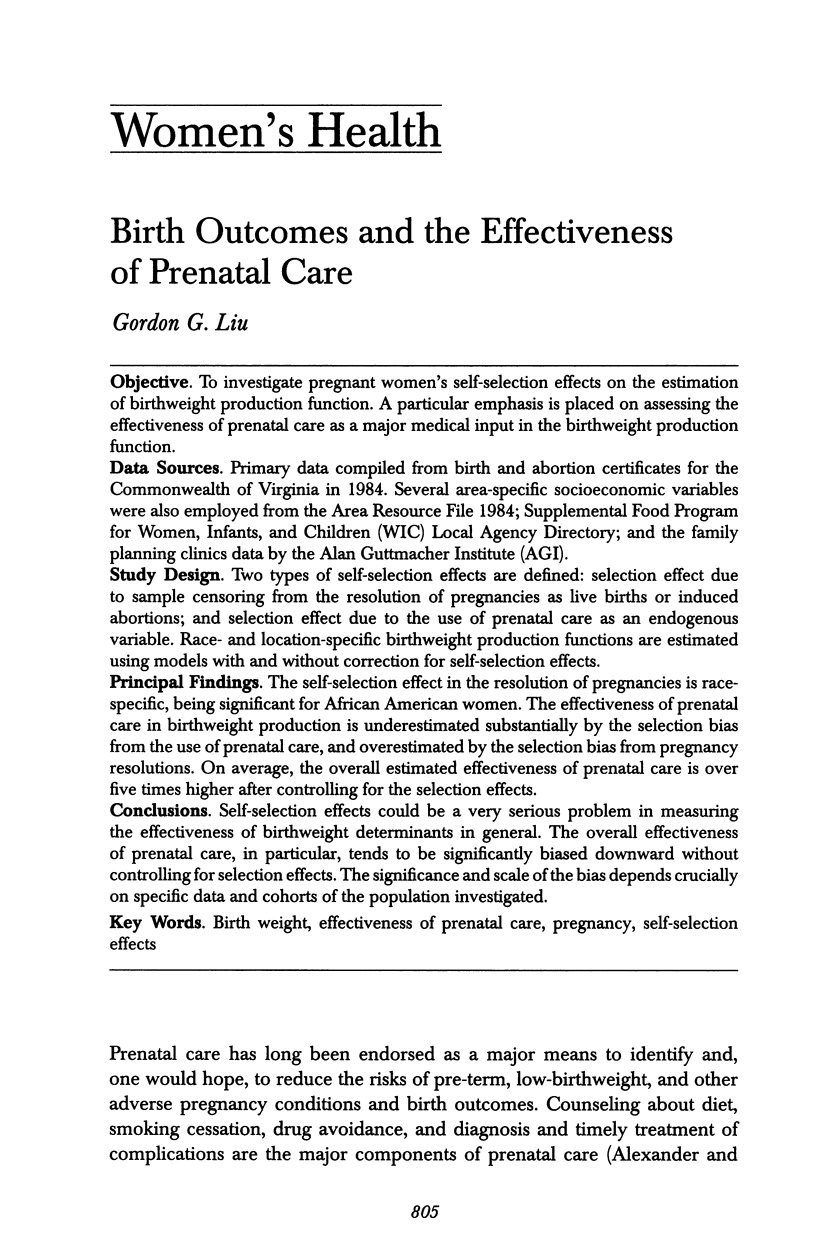
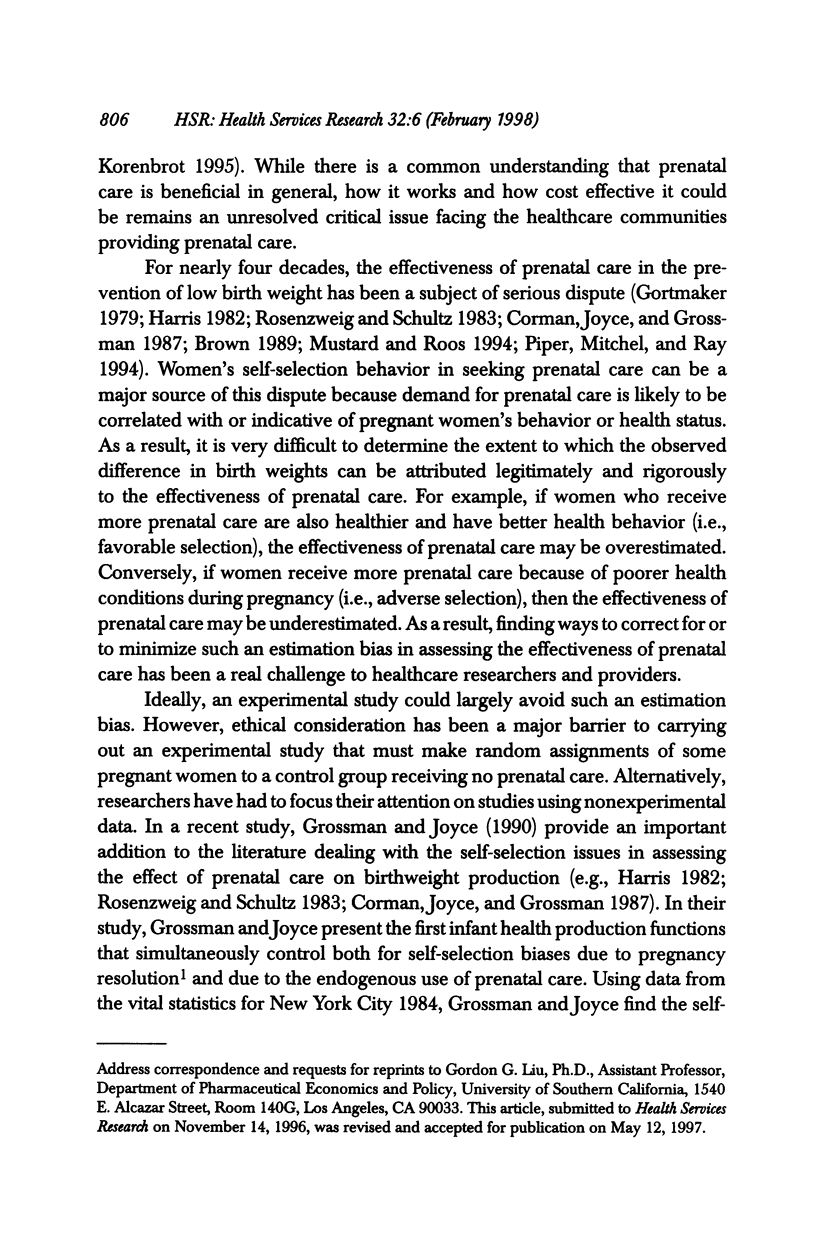
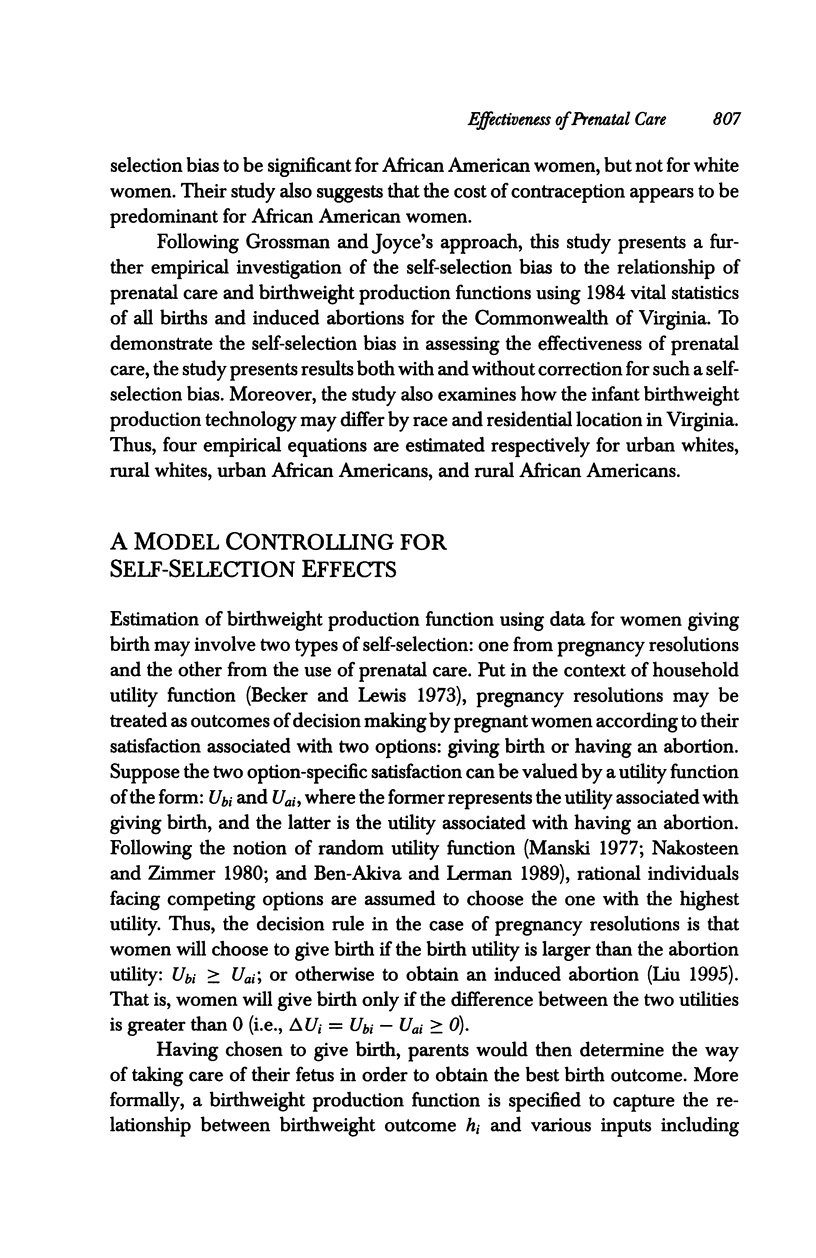
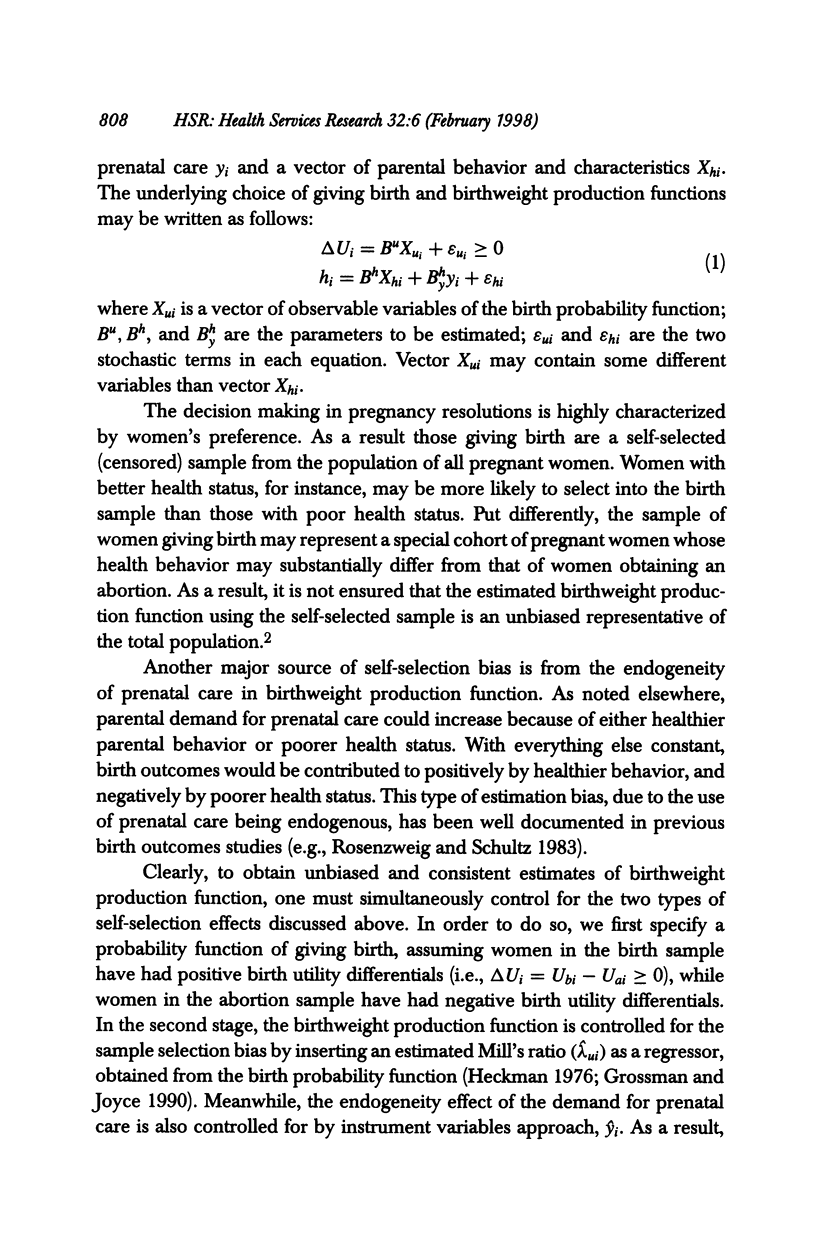
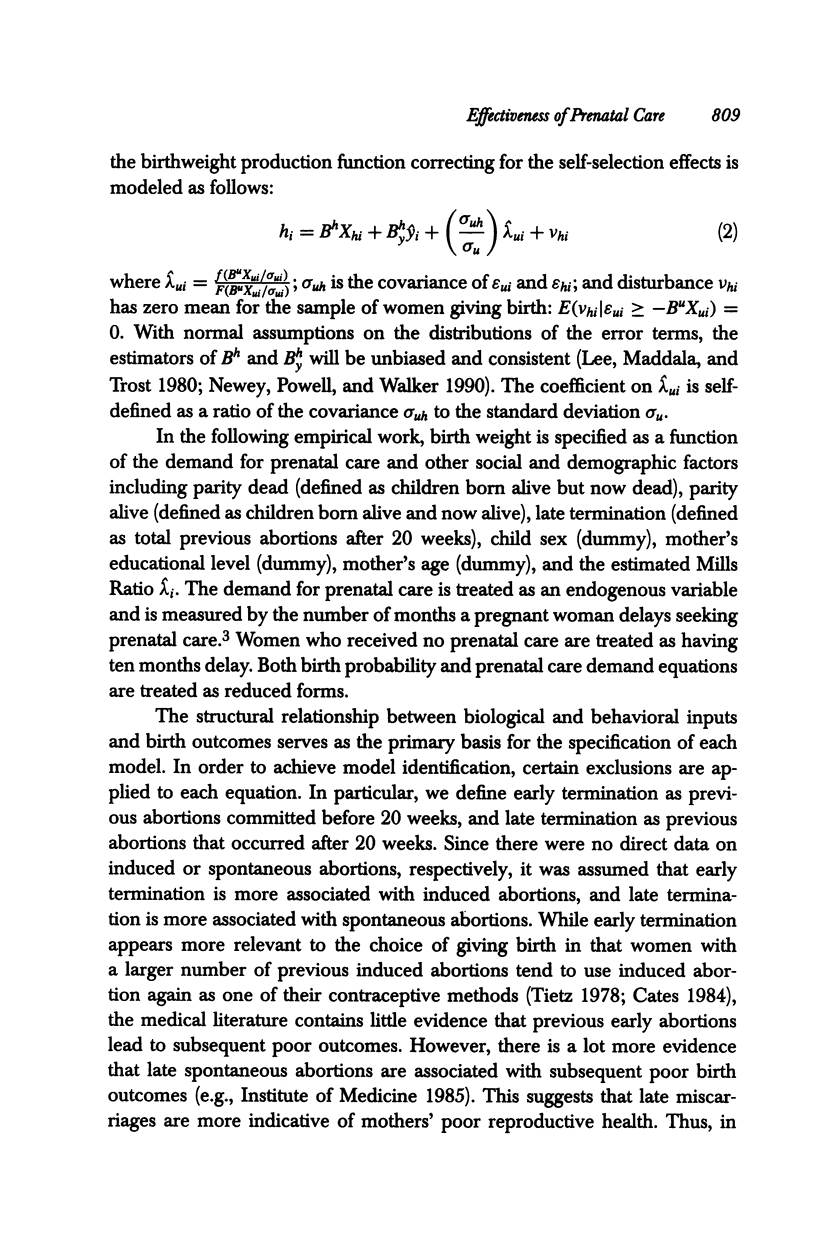
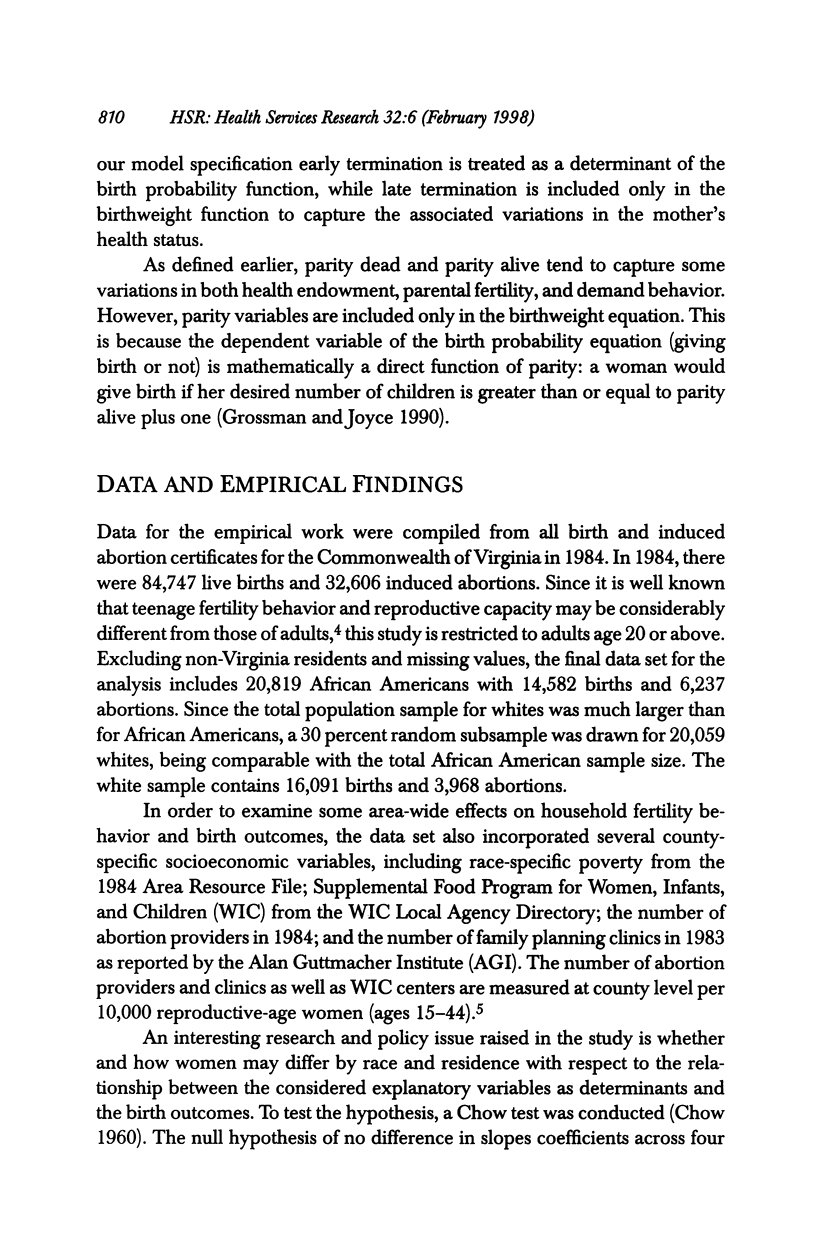
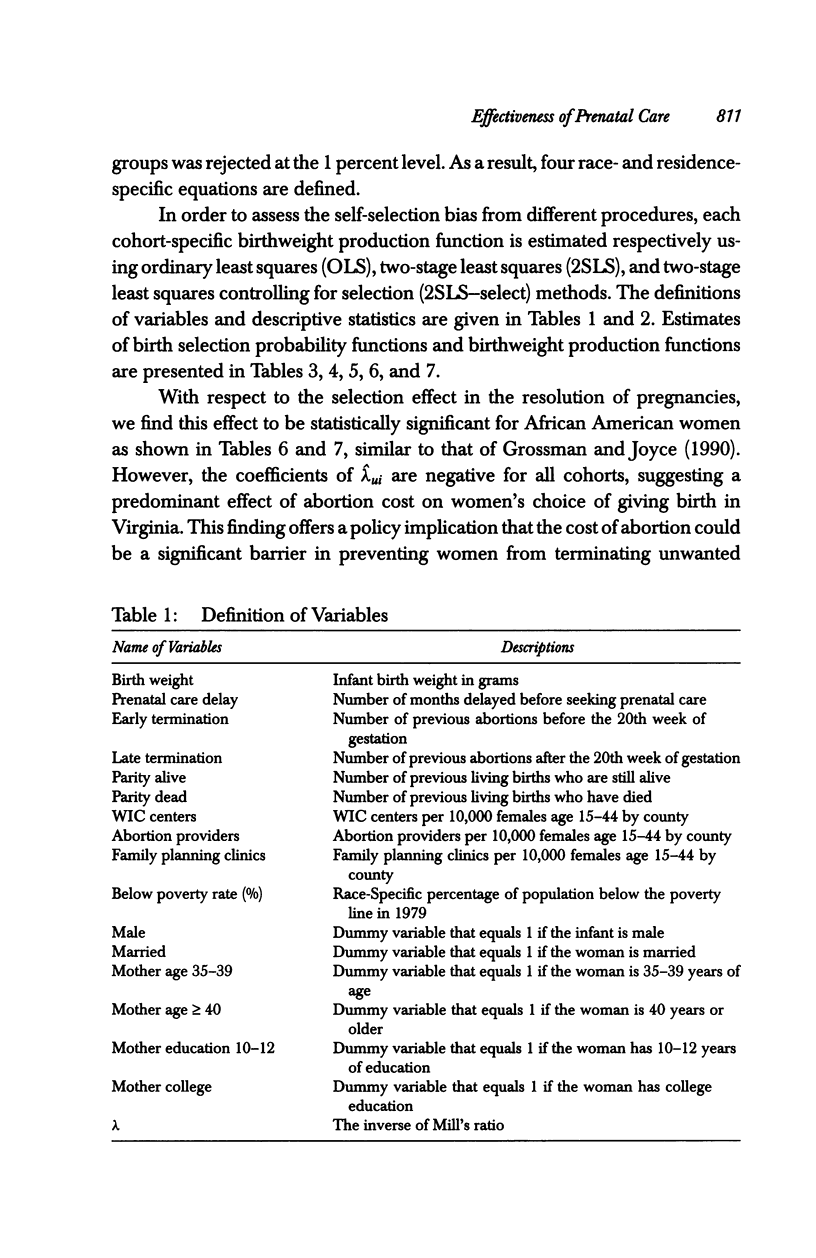
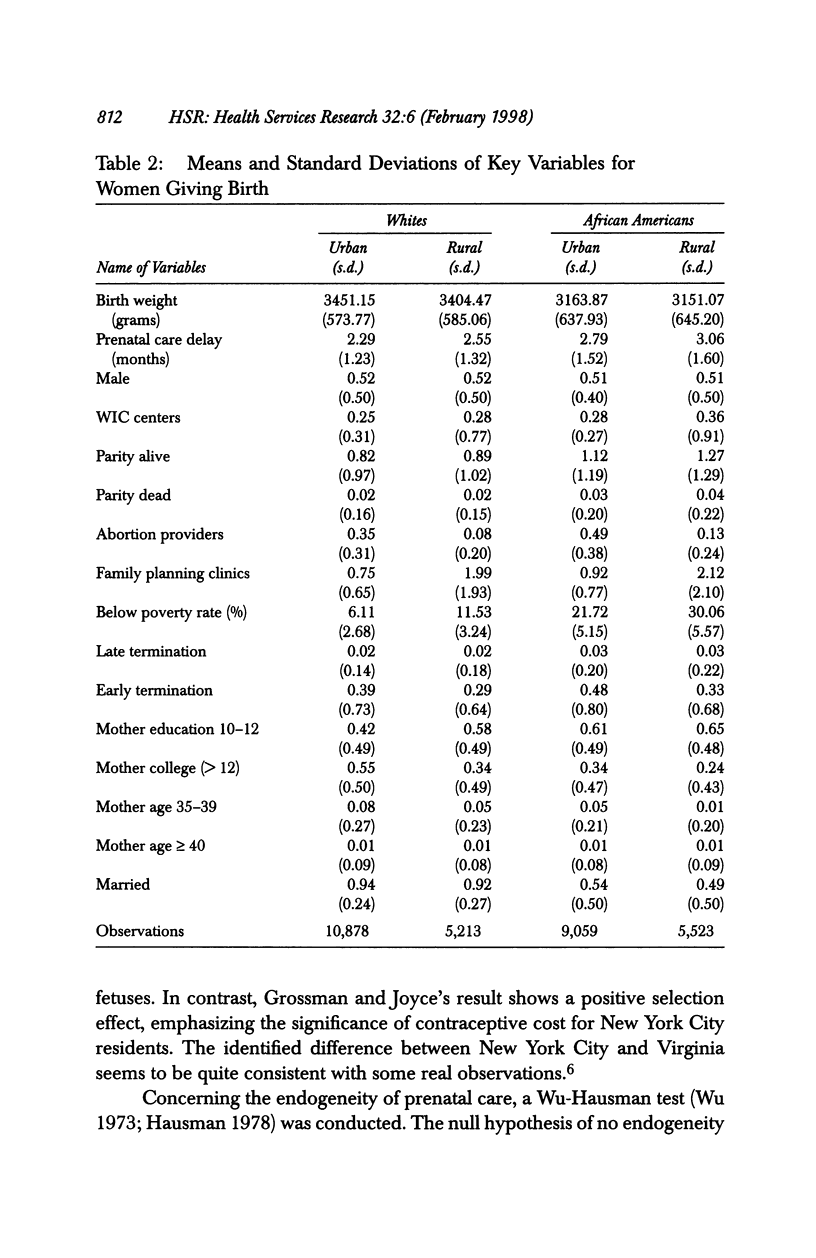
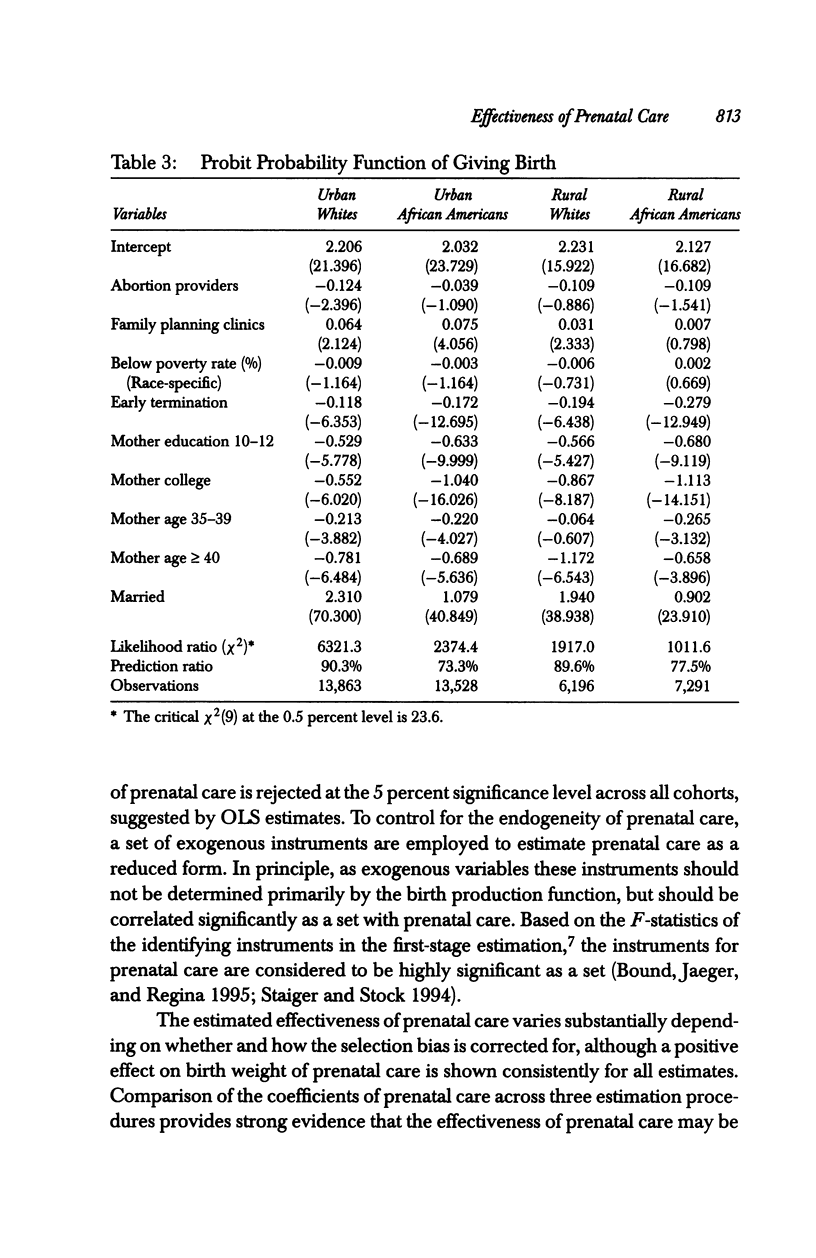
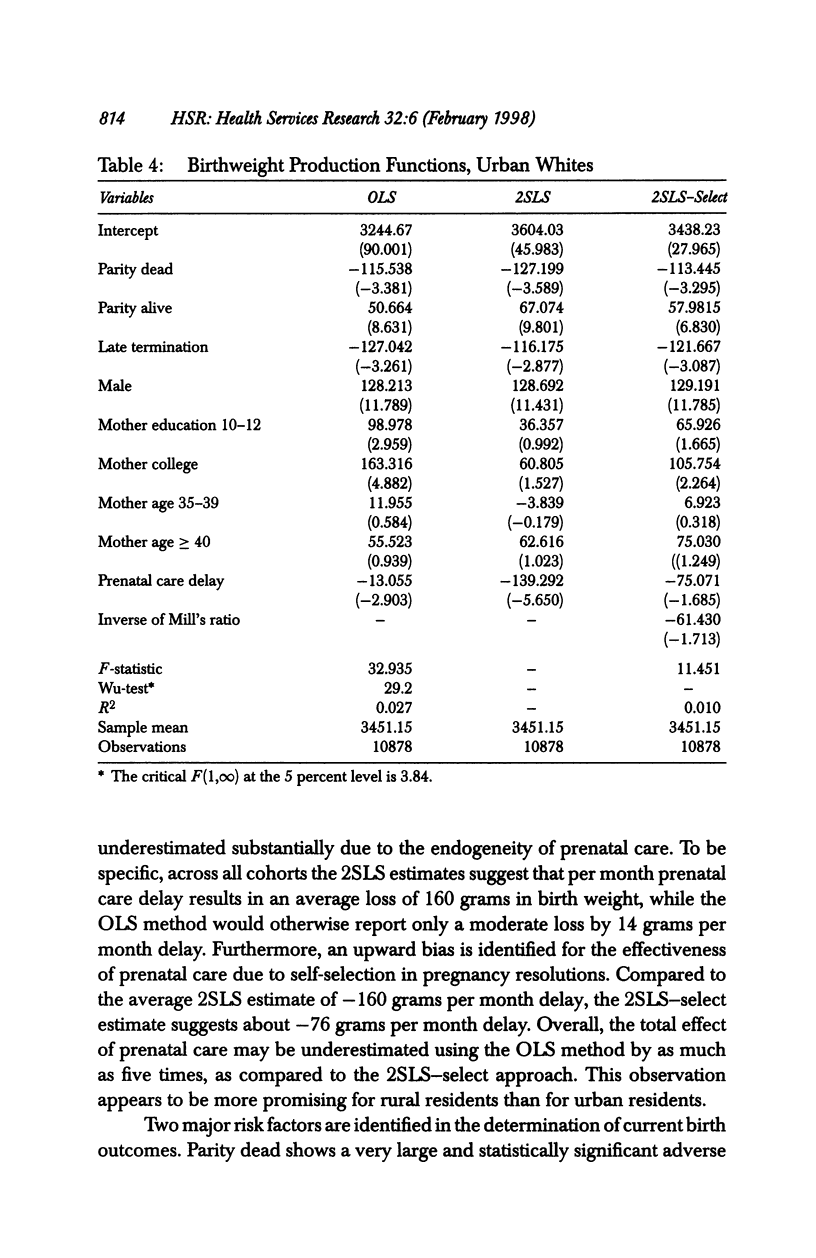
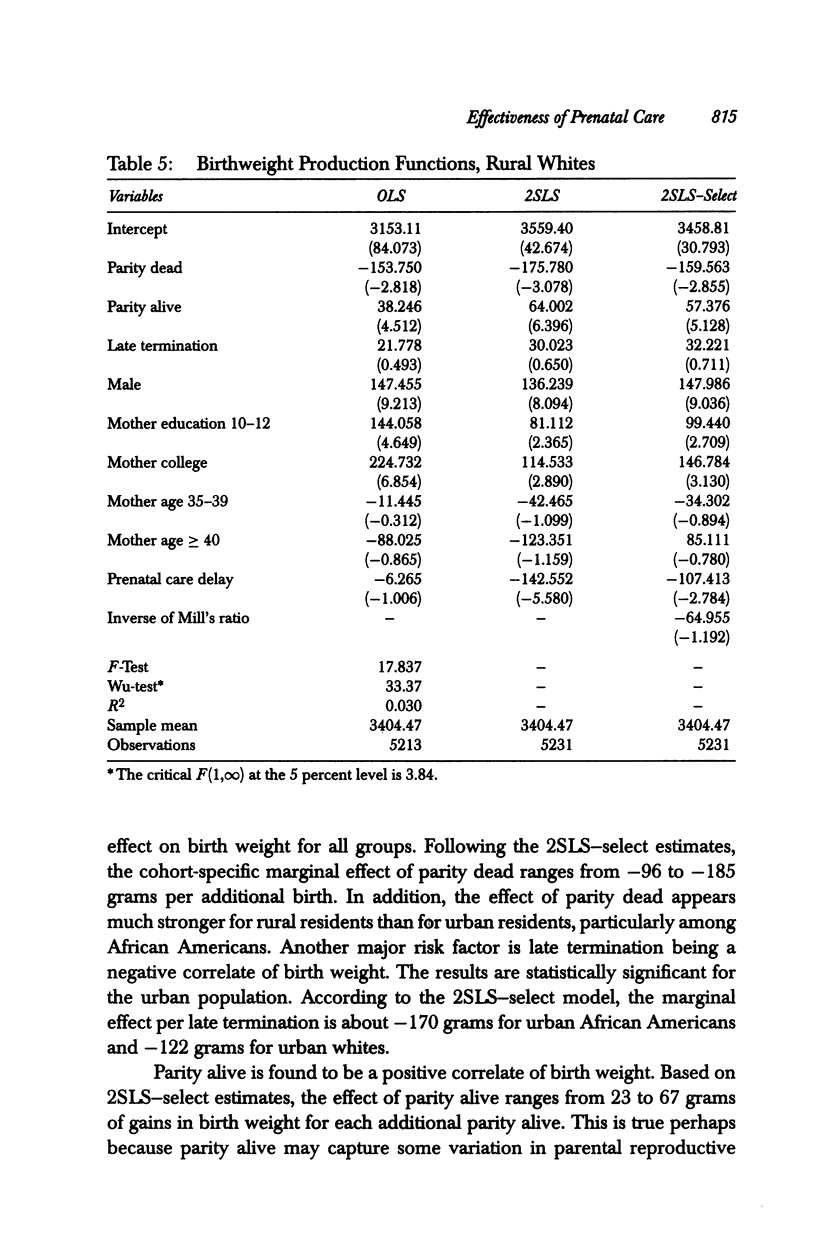
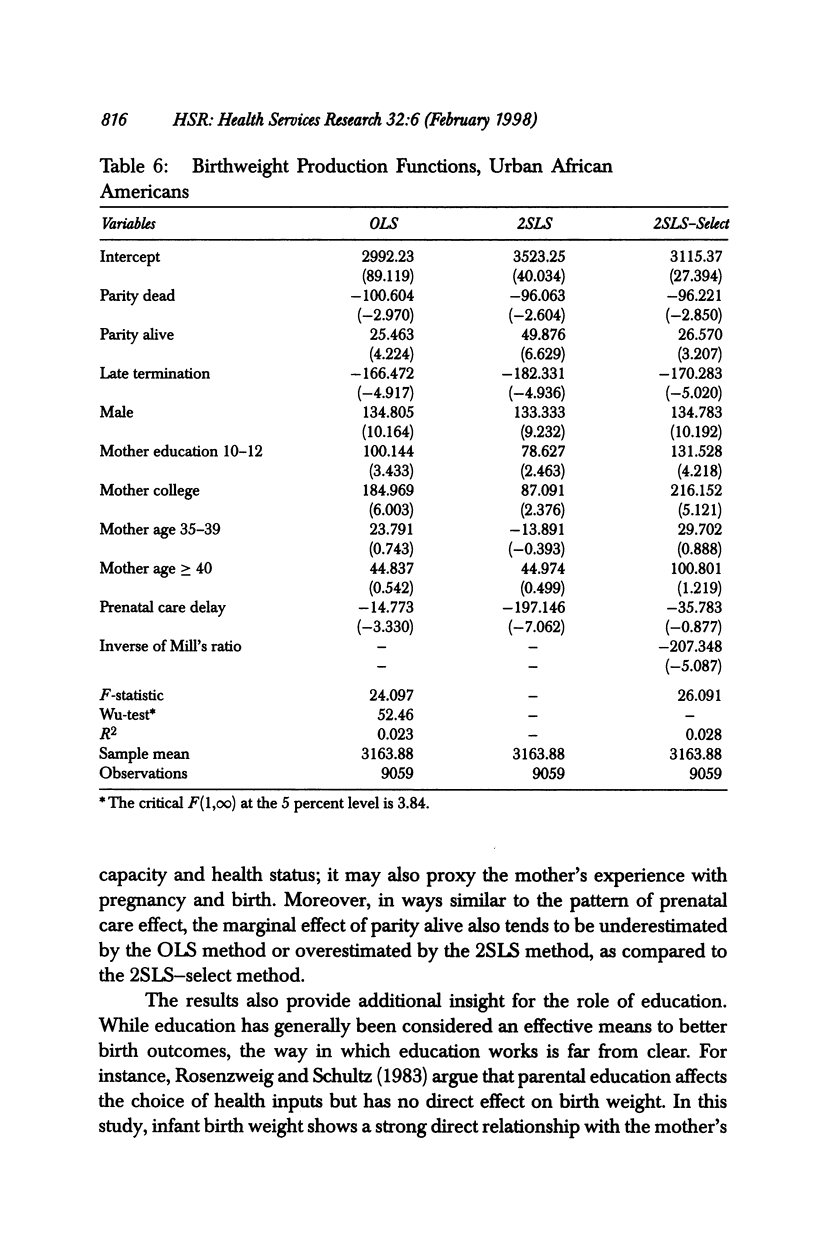
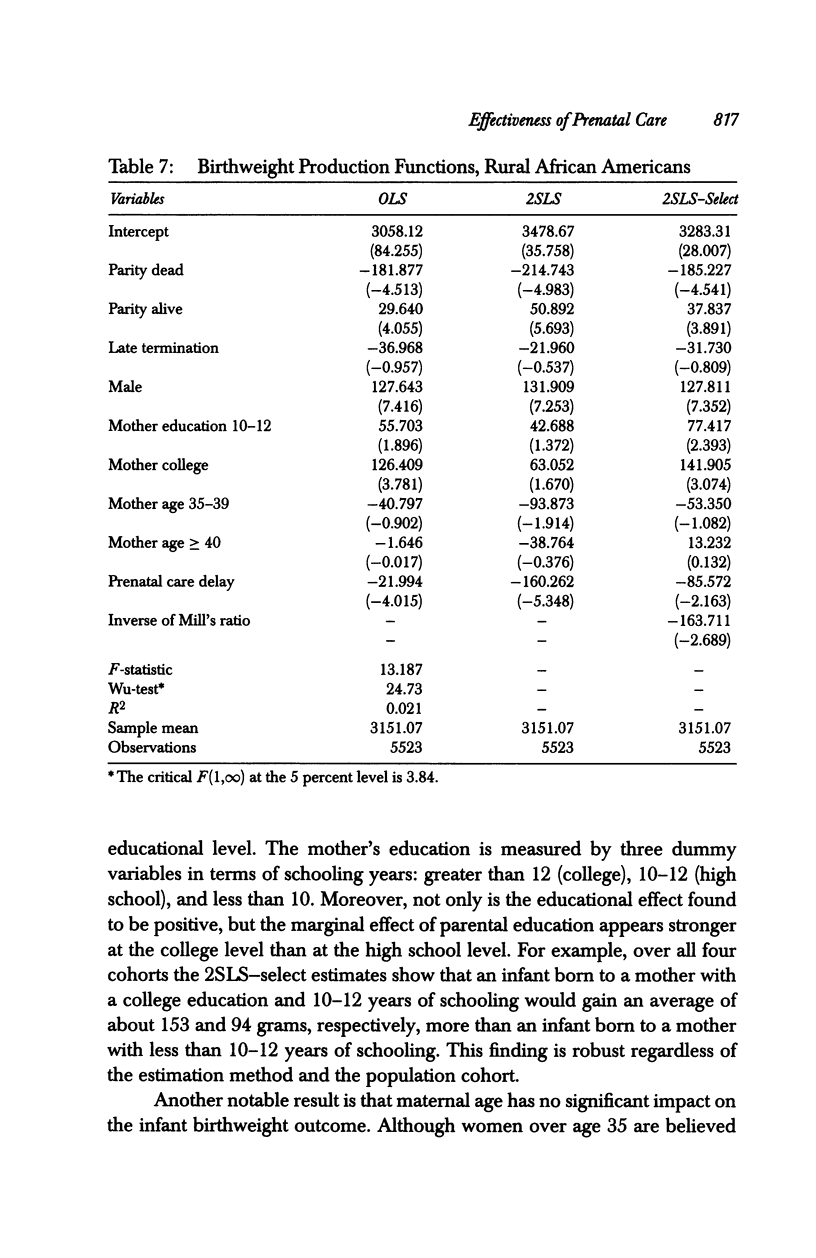
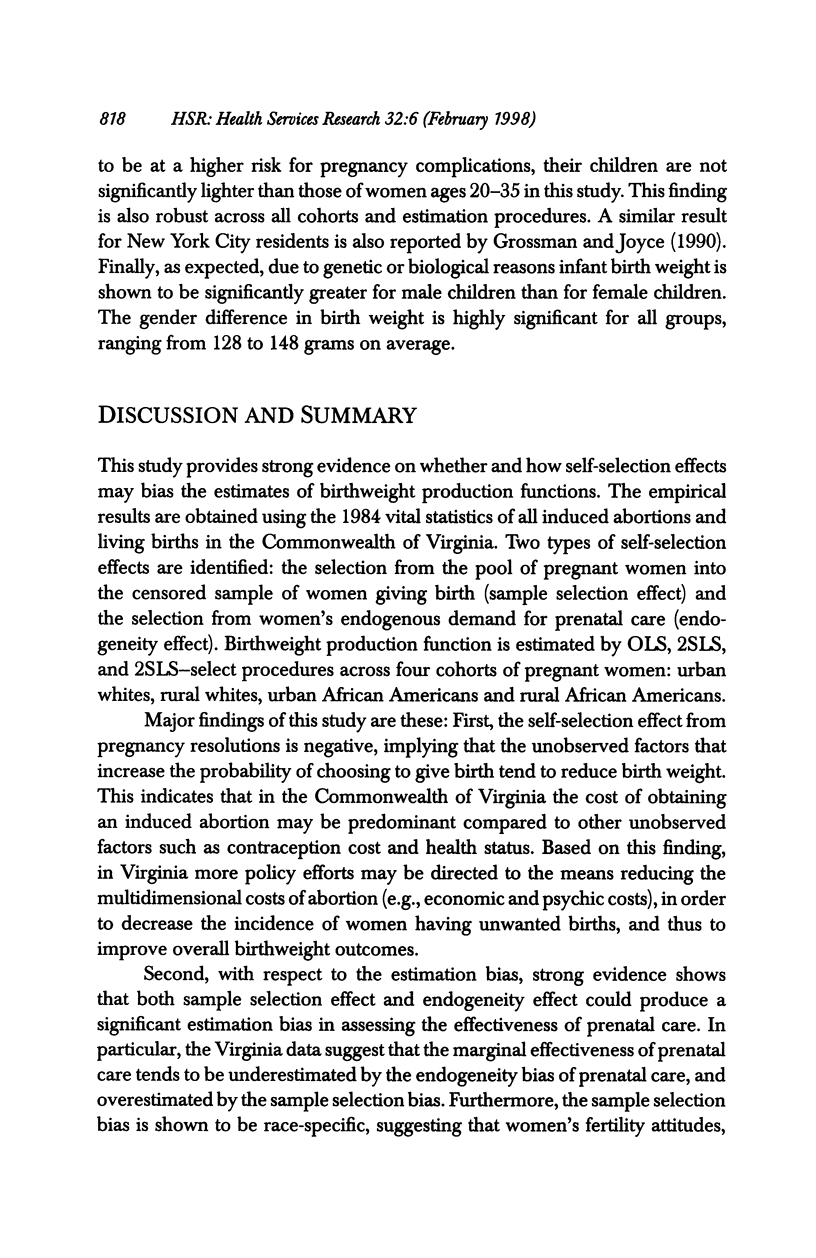
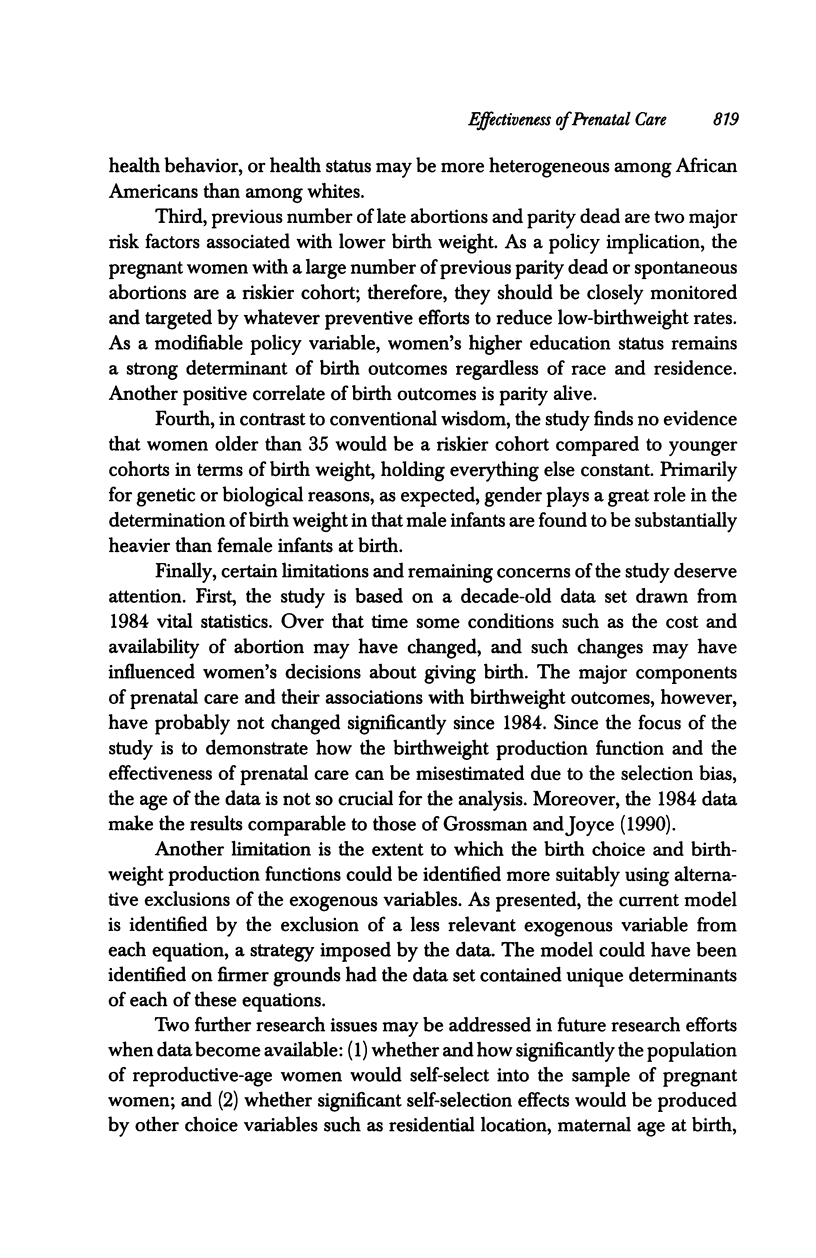
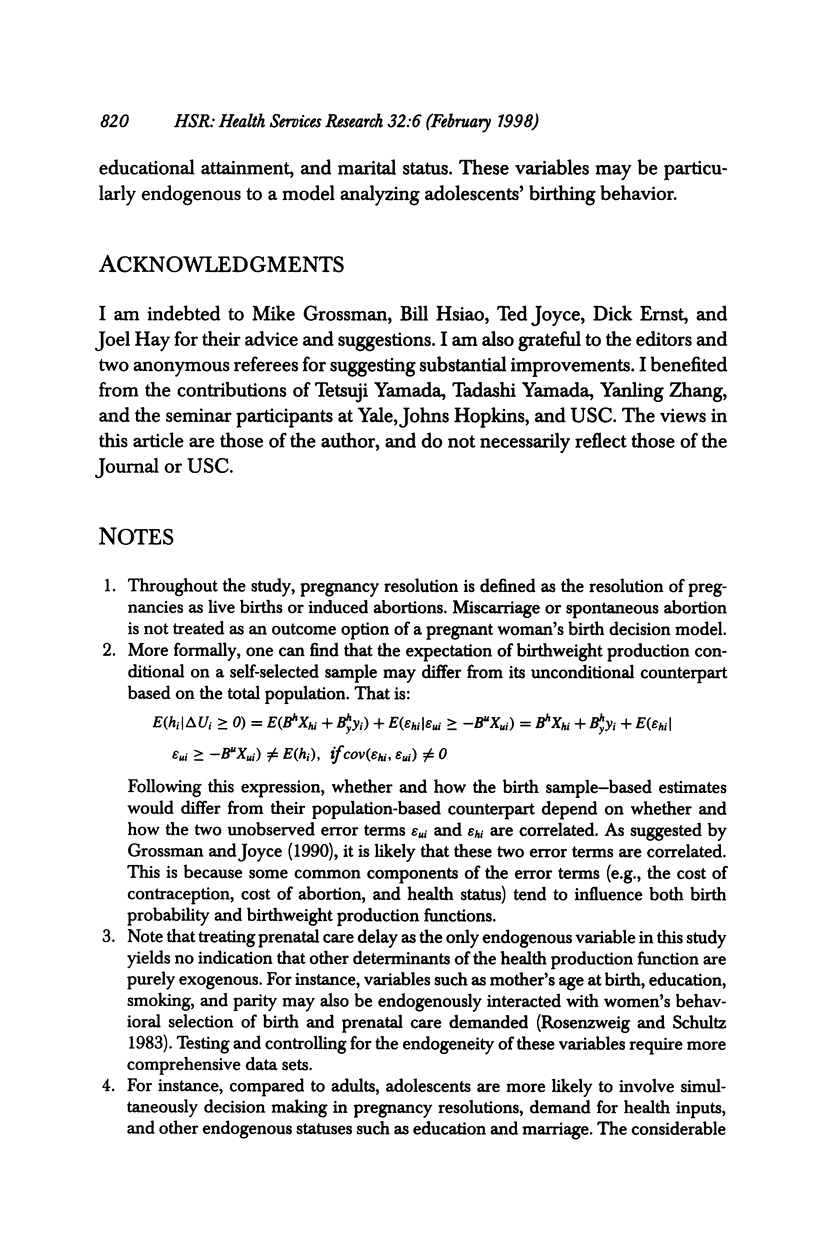
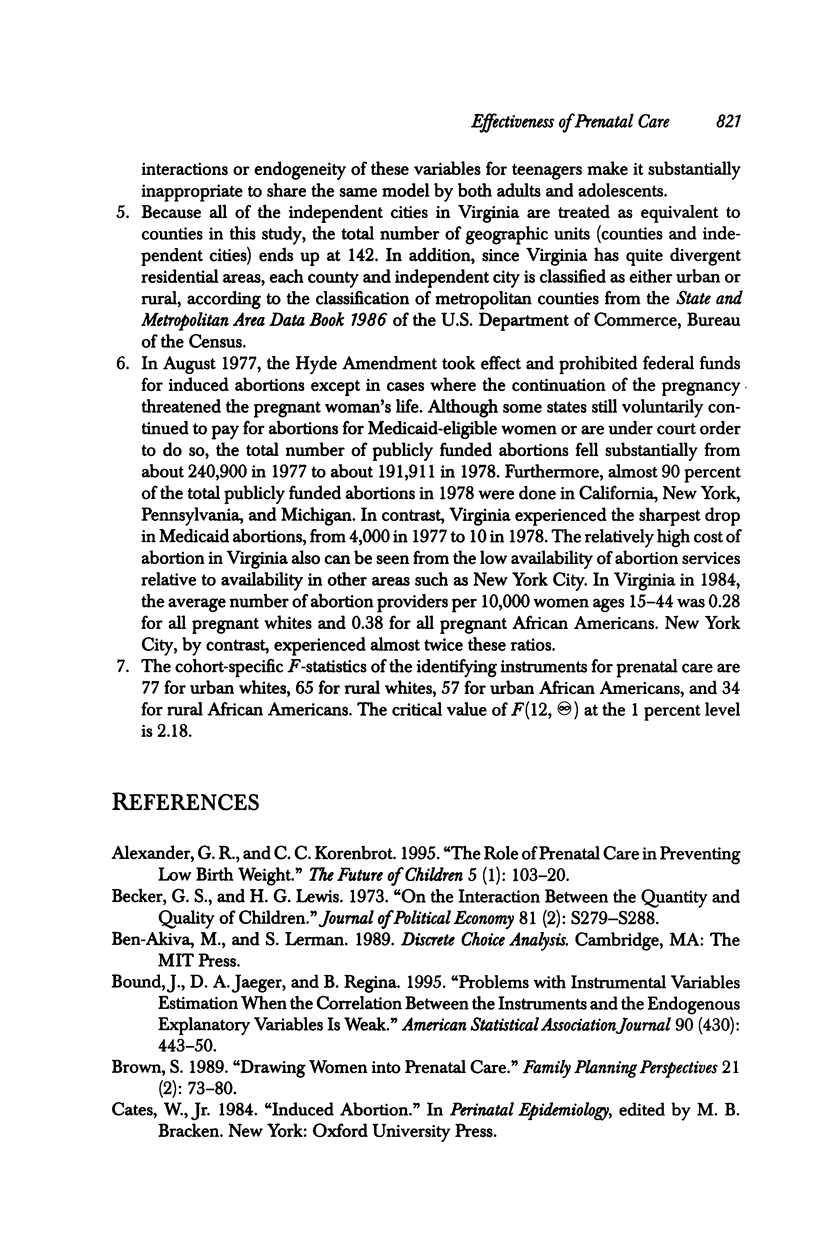
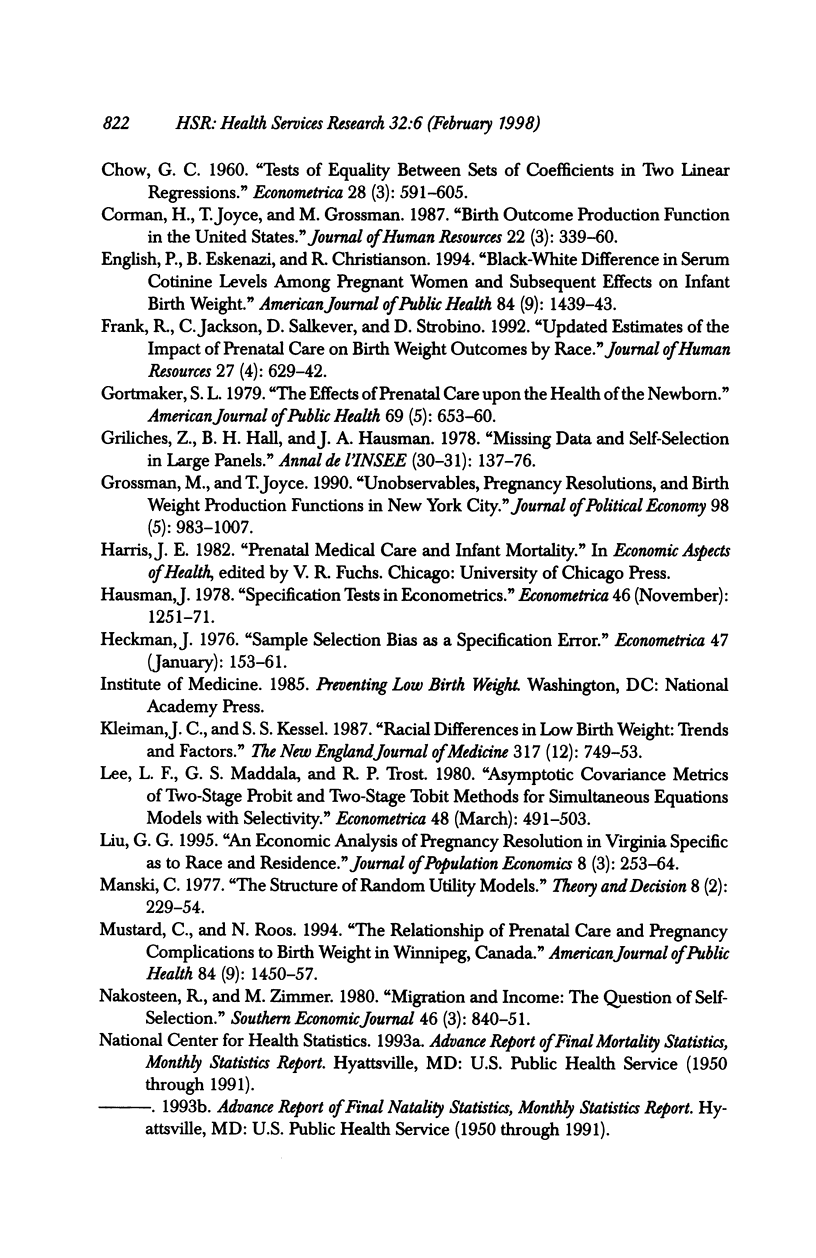
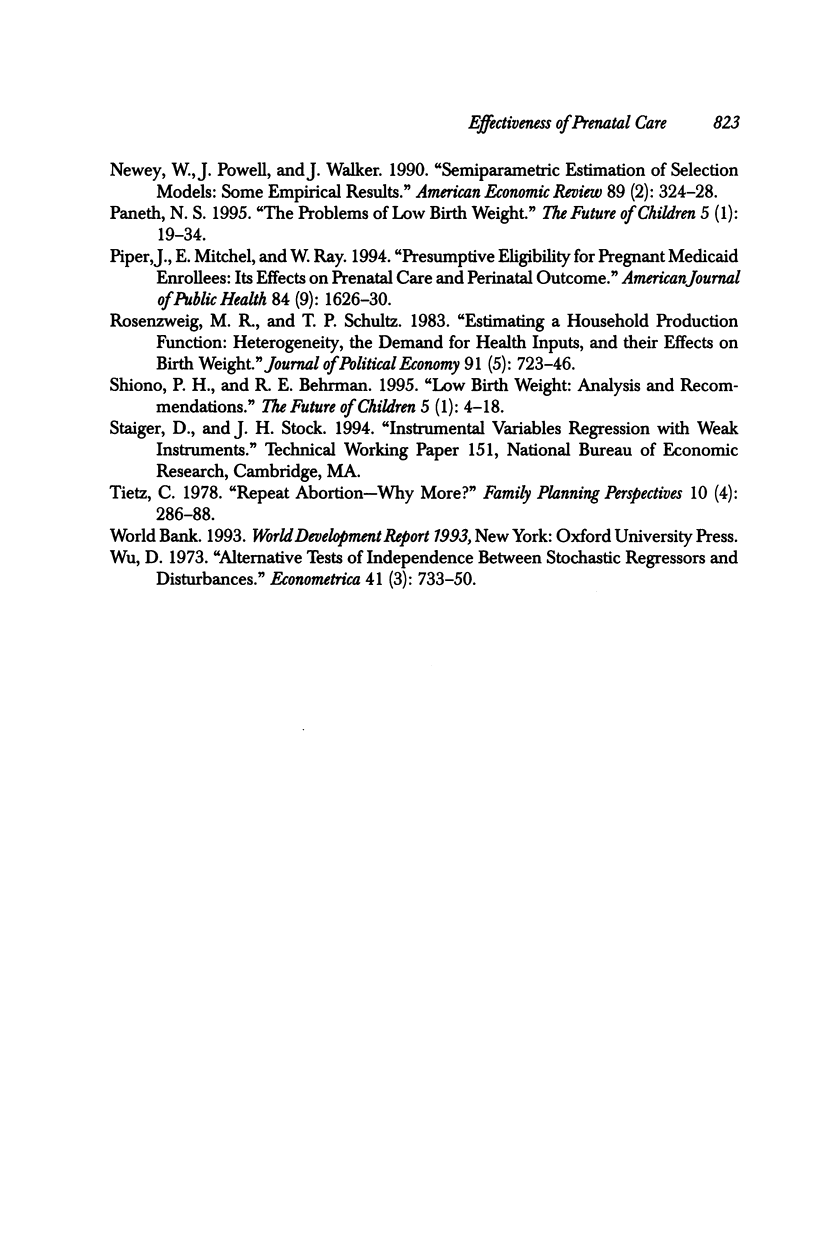
Selected References
These references are in PubMed. This may not be the complete list of references from this article.
- Alexander G. R., Korenbrot C. C. The role of prenatal care in preventing low birth weight. Future Child. 1995 Spring;5(1):103–120. [PubMed] [Google Scholar]
- Brown S. S. Drawing women into prenatal care. Fam Plann Perspect. 1989 Mar-Apr;21(2):73–80. [PubMed] [Google Scholar]
- English P. B., Eskenazi B., Christianson R. E. Black-white differences in serum cotinine levels among pregnant women and subsequent effects on infant birthweight. Am J Public Health. 1994 Sep;84(9):1439–1443. doi: 10.2105/ajph.84.9.1439. [DOI] [PMC free article] [PubMed] [Google Scholar]
- Gortmaker S. L. The effects of prenatal care upon the health of the newborn. Am J Public Health. 1979 Jul;69(7):653–660. doi: 10.2105/ajph.69.7.653. [DOI] [PMC free article] [PubMed] [Google Scholar]
- Kleinman J. C., Kessel S. S. Racial differences in low birth weight. Trends and risk factors. N Engl J Med. 1987 Sep 17;317(12):749–753. doi: 10.1056/NEJM198709173171207. [DOI] [PubMed] [Google Scholar]
- Liu G. G. An economic analysis of pregnancy resolution in Virginia: specific as to race and residence. J Popul Econ. 1995;8(3):253–264. doi: 10.1007/BF00185252. [DOI] [PubMed] [Google Scholar]
- Mustard C. A., Roos N. P. The relationship of prenatal care and pregnancy complications to birthweight in Winnipeg, Canada. Am J Public Health. 1994 Sep;84(9):1450–1457. doi: 10.2105/ajph.84.9.1450. [DOI] [PMC free article] [PubMed] [Google Scholar]
- Nakosteen R. A., Zimmer M. Migration and income: the question of self-selection. South Econ J. 1980;46(3):840–851. [PubMed] [Google Scholar]
- Paneth N. S. The problem of low birth weight. Future Child. 1995 Spring;5(1):19–34. [PubMed] [Google Scholar]
- Piper J. M., Mitchel E. F., Jr, Ray W. A. Presumptive eligibility for pregnant Medicaid enrollees: its effects on prenatal care and perinatal outcome. Am J Public Health. 1994 Oct;84(10):1626–1630. doi: 10.2105/ajph.84.10.1626. [DOI] [PMC free article] [PubMed] [Google Scholar]
- Shiono P. H., Behrman R. E. Low birth weight: analysis and recommendations. Future Child. 1995 Spring;5(1):4–18. [PubMed] [Google Scholar]
- Tietze C. Repeat abortions--why more? Fam Plann Perspect. 1978 Sep-Oct;10(5):286–288. [PubMed] [Google Scholar]


